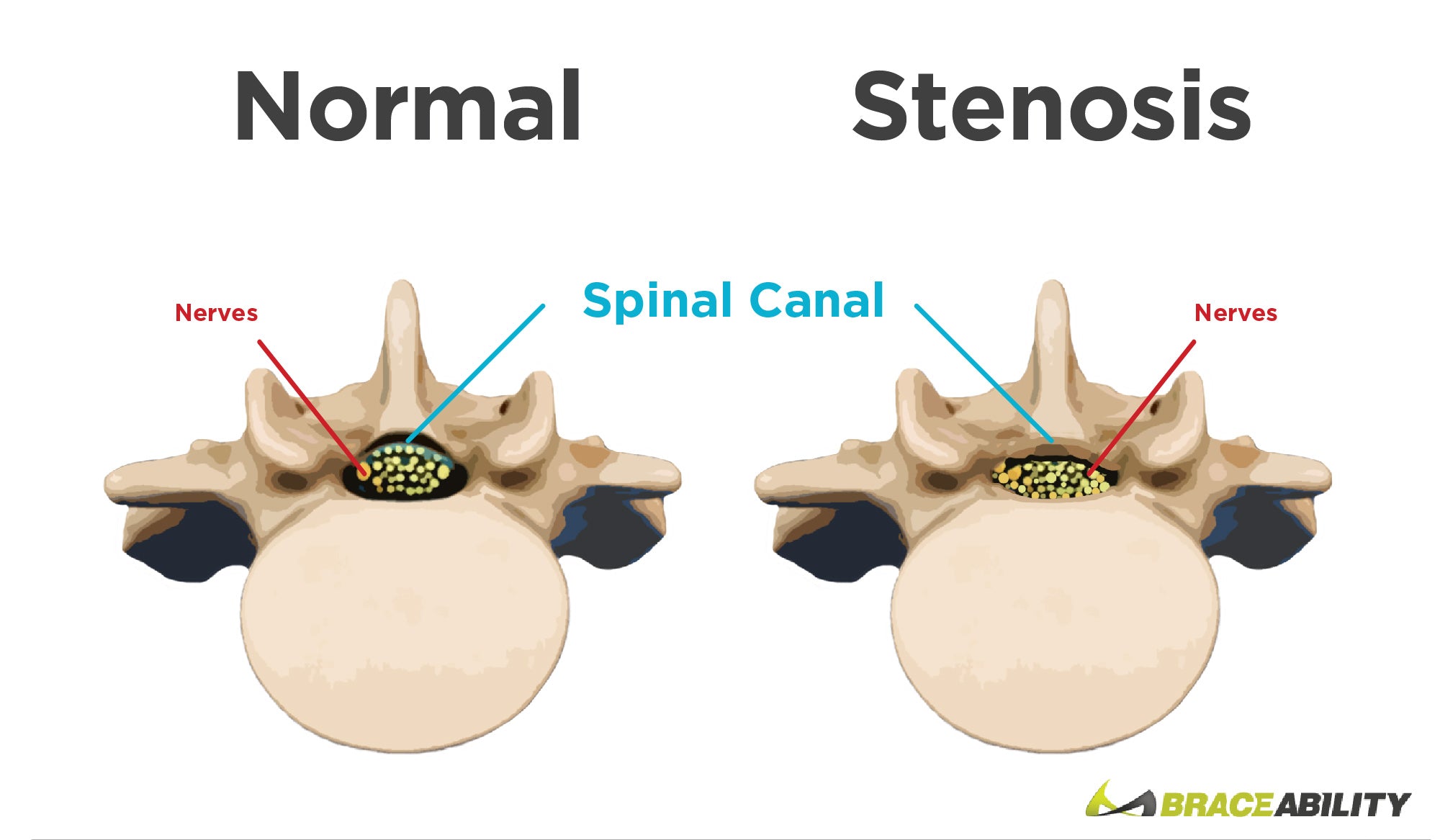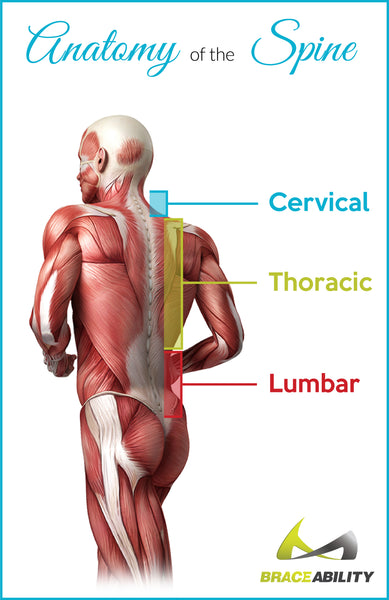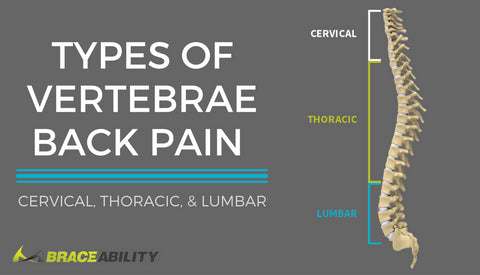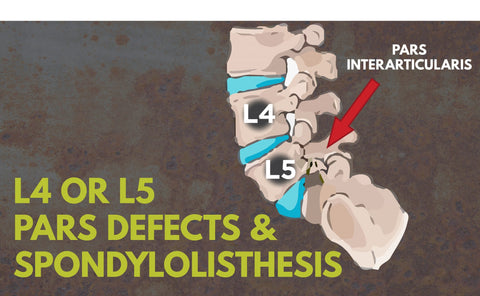Lumbar Spinal Stenosis in your Lower Back
What Is Lumbar Stenosis?
Your spine consists of 26 vertebrates stacked upon one another. These vertebrates are divided into three different regions of your back: lumbar, thoracic, and cervical. The lumbar or lower region of your back consists of five of the 26 vertebrates and connects with your thoracic or lower back region. Although spinal stenosis can occur in any of the three regions, it most commonly occurs in your lumbar part of your back. Lumbar narrowing of the spine results in around 75% of all spinal stenosis cases.
Spinal stenosis refers to a narrowing of the spaces of the spinal canal. Lumbar spinal stenosis more specifically, refers to the narrowing of your spinal canal in your lower back. Another name for this condition is lumbar foraminal stenosis.

What Causes Narrowing In My Lumbar Spine?

Most cases of lumbar stenosis can be chalked up to the degeneration of your spine, as you get older. Thus, most instances of lumbar canal stenosis are seen in those over the age of 50.
Arthritis (degeneration) of the spine is typically the culprit for lumbar spinal stenosis. As you get older, the cushioning discs of the spine lose water content, making them stiffer and weaker. As this occurs, the disc space collapses. This, in turn, transfers the weight to the facet joints at the back of the spinal cord, not to mention, it narrows the tunnels through which the nerves pass, which can result in conditions such as sciatica.
This increase in pressure can cause the facet joints to degenerate themselves, eroding the protective cartilage of the joints, resulting in painful bone-on-bone rubbing. The body might also respond with new bone growth known as bone spurs in these joint areas that can further narrow the space the nerves must pass through. Also compounding the situation, the ligaments around the joint can also increase in size in response to arthritis.
While instances of congenital lumbar spinal stenosis are rare, they are not unheard of. In such cases, symptoms are usually not evident until you hit age 30 or more. In addition, diseases such as Paget’s disease, which softens the bones in your spine may lead to lumbar spinal stenosis as well. Trauma and bone fractures can also lead to spinal stenosis of the lumbar region.
Does Being An Obese Individual Lead To Lumbar Spinal Stenosis?
Individuals that may be carrying around extra weight have a higher chance of many health conditions such as high blood pressure, diabetes, cancers, strokes, sleep apnea, and back problems. You might be unaware that this weight may be the underlying cause of your back issues, whether it’s your lower, middle, or upper back.
Being obese causes extra stress and weight to be placed on your spinal joints, discs, muscles, and vertebrae. This stress causes numerous different back problems and pain including lumbar spinal stenosis. Other back conditions relating to obesity include herniated disc, pinched nerve, osteoarthritis, and bulging disc.
It’s recommended to do exercises to help strengthen your core and back muscles to help alleviate and reduce your chance of these conditions. Such exercises will help relieve your spine from all the pressure and weight being placed on it. You can also wear a posture brace to help lift and train your shoulder muscles to stand up straight in the correct posture.
What Are Symptoms of Lumbar Spinal Stenosis?
All of this can result in a number of symptoms affecting not only the lower back but also the lower half of the body. Lumbar spinal stenosis pain may or may not be a symptom of this condition. If a pressure is placed on the sciatic nerve, you might also experience an aching or burning lumbar stenosis pain in the buttocks and down the leg, also known as sciatica. Numbness or tingling in your legs and buttocks are other lumbar stenosis symptoms that often coincide with the burning pain of sciatica.
With severe lumbar stenosis, you might experience weakness of the legs or even foot drop, a condition where the front of your foot slaps against the ground as you walk.
Other symptoms may include:
- Cramping in your calves or thighs when you’re walking
- Stiffness in your legs and thighs
- Pain that subsides when you lay or sit down
- Loss of motor functioning in your legs (rare cases)
- Loss of control over bladder or bowel movements (rare cases)
Lumbar Spinal Stenosis vs. Cervical Spinal Stenosis
 As mentioned above, lumbar spinal stenosis is the most common region for spinal stenosis to occur. The second most common area of your back is cervical spinal stenosis. The cervical region of your back refers to your upper back or neck of your spine. This region consists of seven bones that connect with your thoracic spine region.
As mentioned above, lumbar spinal stenosis is the most common region for spinal stenosis to occur. The second most common area of your back is cervical spinal stenosis. The cervical region of your back refers to your upper back or neck of your spine. This region consists of seven bones that connect with your thoracic spine region.
Cervical spinal stenosis is a result of the spinal canals in your neck narrowing and compressing your spinal cord. This condition is more common for men because they tend to do more exercises such as weightlifting, which adds extra wear and tear to your neck and upper back region.
Wondering if you have cervical spinal stenosis? Some of the common symptoms include:
- Mild to intense neck pain
- Weakness in your neck or upper back region
- Clumsiness with your hands
- Burning, tingling, or numbness in your neck, shoulders, arms, or hands
- Issues with your bowel or bladder movements (rare cases)
What Are Conservative Treatment Options for Lumbar Spinal Stenosis?
Your doctor will diagnose you with spinal stenosis by hearing a medical history, symptom review, imaging tests such as x-rays or a lumbar spinal stenosis MRI. After, your medical professional might recommend a number of conservative treatments for cases outside of severe lumbar spinal stenosis such as:
- Anti-inflammatory medications: Either prescription strength or over-the-counter varieties, can help ease the pain as well as the inflammation that can lead to spinal stenosis symptoms, lumbar vicinity.
- Steroid injections: Such as cortisone in the epidural space can be helpful to the same end. However, there are limits as to how often one can receive such injections.
- Cortisone injections: Might be more helpful with pain and numbness than they are with weakness that might be associated with stenosis of the lumbar spine.
- Hot and cold therapy: Helps reduce swelling and give you pain relief.
- Losing weight: Excess weight may put extra stress and tension on your spine.
- Acupuncture: However, the long-term success of this treatment method is untested.
- Chiropractic adjustment: Can also be helpful for some individuals, though you should always go to an experienced professional because the compromised state of the spine means adjustment can also make the stenosis of lumbar spine worse.
Can Physical Therapy Help Alleviate My Lumbar Foraminal Stenosis Pain?
Another way of addressing degenerative lumbar spinal stenosis is with physical therapy. Lumbar spinal stenosis physical therapy focuses on exercises and stretches that strengthen the back and abdominal muscles so that they can take some of the pressure off the low back. Another emphasis of lumbar stenosis exercises is to maintain the endurance and range of motion of the spine.
In many cases, engaging in exercises for lumbar stenosis such as swimming, riding a stationary bike, yoga, walking, and tai chi can also be helpful for preventing this condition from progressing. Massage is another lumbar stenosis physical therapy technique that may help relieve pain and other symptoms.
Spinal Stenosis Lumbar Back Supports
In addition to the suggested treatments above, wearing a lumbar support brace can help immobilize your spine and reduce the amount of stress placed on your spinal cord.
A lumbar brace can also be helpful outside of the gym for everyday life. Supports such as the Cybertech SPINE Brace can help ease pain associated with lumbar spinal canal stenosis, not to mention they can prevent the spine from moving in ways that worsen the condition.
What Are Surgery Options For Lumbar Narrowing of the Spine?
In some cases, especially when your quality of life is jeopardized due to lumbar stenosis lumbar spine neurological issues, surgery is necessary. Your health, age, and response to conservative treatment all come into play when making this decision to surgically free up space in the spine.
One of the more common procedures is lumbar laminectomy spinal stenosis. This procedure involves removing the bones, ligaments, etc. that are compressing the nerves and it may be done with or without spinal fusion—a procedure to fuse the vertebrae together in an effort to improve the stability of the spine. This decompression procedure can be done via an open procedure or a less invasive procedure that relies upon microscopes for “seeing” the area on which a surgeon is working. For an estimated 80% of patients, this surgery results in a good to excellent lumbar spinal stenosis prognosis.
A newer, less invasive surgical procedure that is pursued by qualified candidates is the insertion of a spacer device into the spine. Following surgery, you might need a post-operative low-back brace. BraceAbility has a number of products well suited for this and any subsequent physical therapy for lumbar spinal stenosis.






